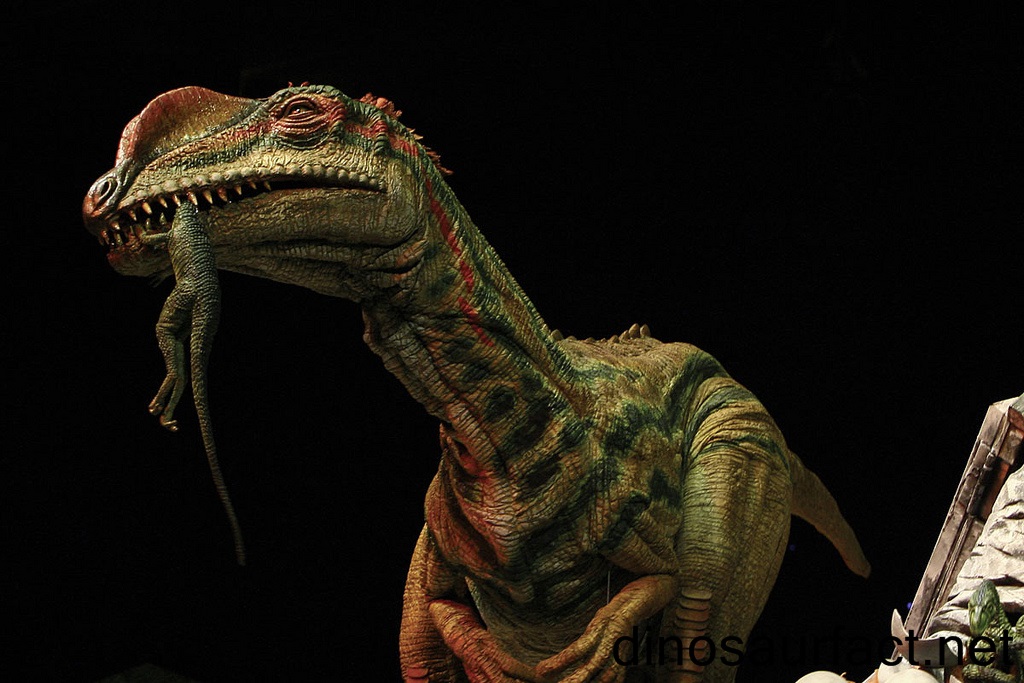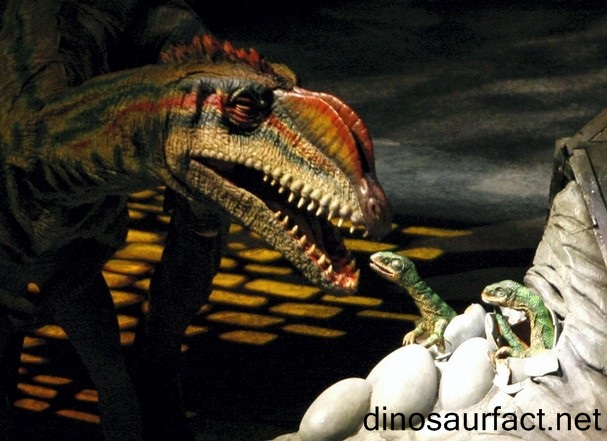 Click to visit the previous dinosaur bio
Click to visit the previous dinosaur bio
 |
|
 |
|
Kingdom: Animalia
Phylum: Chordata
Class: Sauropsida
Superorder: Dinosauria
Order: Saurischia
Suborder: Theropoda
Family: Coelophysoidea
Genus: Liliensternus
 |
|
 |
|
 |
|

The Liliensternus Dinosaur
The Liliensternus dinosaur was a carnivorous dinosaur from the wetlands of Western Europe in what is now known as Germany. It lived around 210 million years ago, during the Upper Triassic period. It is one of the best studied and identified European dinosaurs and also the largest.
The Discovery of Fossils
The discovery of the Liliensternus dinosaur fossils took place in the Groben Greichberg of the Trossingen Formation in remains from what is known as the Norian stage of the upper Triassic. This formation is a part of the Middle Keuper group in Thuringia, Germany. The skeletal remains of two dinosaurs are collectively designated as the syntype series HMN BM.R.2175. The remains consist of the skull, the vertebrae, the lower jaws and the appendicular skeleton from at least two individuals
The discovery has been credited to Count Hugo Ruhle von Lilienstern in 1932/1933. The species has so been named after him. The syntype was described by Frederick Von Huene in 1934. Being earlier assigned to the Halticosaurus genus, it was named H. liliensterni. After correctly being placed in a separate genus of its own, the species name became Liliensternus lilensterni.
Later, deposits of Norian stage also yielded a left metarsal fossil found in 1834 were assigned to this genus by Moser in 2003. In 1961, deposits found in grey green marlstone unearthed from the Lowenstone Formation in Argau, Switzerland and were later described as belonging to the Liliensternus by Sander in 1992. From the German Lowenst0ne Formation in Baden-Wurttemberg, a tooth belonging to the Liliensternus was found in 1913 in dark red mudstones.
Only one deposit belonging to a later part of the Upper Triassic i.e. the Rhaetian stage was found in 1913 from the Rhaetian stage of the Late Triassic. These were discovered in the blue clay stone deposits of the Trossingen Formation of Sachsen-Anhalt, Germany. These are estimated to have been around 208 to 201 million years old.
The Trossingen Formation & Count Hugo Ruhle von Lilienstern
The Trossingen Formation of Germany is a geological formation that comprises of rocks that belong to the Norian stage. It has produced the fossils of several Cretosaurs, Aetosaurs and Sauropods.
Although he was an amateur paleontologist and a medical doctor, the count was enthusiastic about furthering paleontology in Germany. He founded a paleontological museum at his castle in Bedheim, Germany on July 1, 1934. The Liliensternus specimen was on exhibit in the Counts' castle until being transferred to the collection of Berlin's Humboldt Museum.
Related Species
The Liliensternus is closest in resemblance to the Dilophosaurus. The Liliensternus and the Dilophosaurus both have crests on the skull and a short illium. It is an intermediate between the Dilophosaurus and the Coelophysis dinosaur.
The Liliensternus, before being identified as a separate subspecies was assigned to the genus Halticosaurus. In 1993, the Lophostropheus was wrongly classified as a sub species of the Liliensternus and was named L. airelensis.
The Late Triassic Period (Norian stage)
The Upper Triassic is the highest epoch from the Triassic period. A vast number of species and genera of dinosaurs and other extinct creatures were a part of this period. This period is important from the point of view of the study of prehistoric animals. It is succeeded by the Jurassic Period. This period extends from approximately 235 - 201.3 million years ago.
The Norian is the intermediate stage of the three stages of the Upper Triassic. The Norian stage is the successor to the Carnian stage and followed by the Rhaetian stage. It lasts from 228 - 208.5 million years ago. A lot of theropods and sauropods are found in formations of the Norian stage.
Distinct Physical Features and Anatomy
The Liliensternus was a moderately large dinosaur. It is one of the largest known European Dinosaurs. It is estimated to have grown up to 5.15 m long and weighed around 200 kilograms. The femur is approximately 440 mm and is longer than the tibia, which is 409 mm. The Liliensternus' hip bone is unusually short. This is just like the Dilophosaurus.
The specimen has only two fused sacral vertebrae and sutures on the neurocenter are visible on the vertebrae. This suggests that the fossils either belonged to a young or sub adult dinosaur. Several automorphies have been identified in this species. Following are some of the key automorphies present in the Liliensternus (Rauhut, 2007):
- The cervical vertebrae has one pair of pleuorcoels.
- The infradiapophyseal fossa is not well developed.
- The lateral budge of the illium is absent.
- There is no horizontal ridge on the base of the cervical neural spines.
- A broad circularly rounded ridge extends from the frontal end of the diapophyses to the posteroventral end of the vertebral column of the cervical vertebrae.
About the Liliensternus
The Liliensternus is an extinct theropod dinosaur belonging to the superfamily Coelophysoidea. It was a bipedal dinosaur i.e. it used to walk on its hind limbs. The long thigh bone enabled it to run faster. The femur was well developed. It was a ground dwelling creature and is not known to have lived in herds.
The Liliensternus was a carnivore i.e. a flesh eating dinosaur. Its claws were sharp. It had three well developed digits on each hand and two fused digits. The claws were curved so as to help it grasp its food. It had sharp teeth and a strong jawbone that enabled it to tear apart the prey while feeding.
It is one of the largest known theropods from the European Continent. It had long been considered a derived species of theropods but now analysis has revealed it is a basal coelophysoidea. A lot of information is available for the dinosaur and it is one of the most well-known theropod dinosaurs. Thus it is an important dinosaur that can act as a standard for comparative study.
The Liliensternus can help us understand more about the primitive dinosaurs from the Upper Triassic period, especially the Norian age. Thus, it can help us understand more about the prehistoric wildlife and the creatures from the Earth as it was eons ago.
Index
Extinct Profiles
 Triassic Dinosaurs
Triassic Dinosaurs Jurassic Dinosaurs
Jurassic Dinosaurs Cretaceous Dinosaurs
Cretaceous Dinosaurs Pterosaurs
Pterosaurs Marine Reptiles
Marine Reptiles Dinosaur Extinction
Dinosaur Extinction